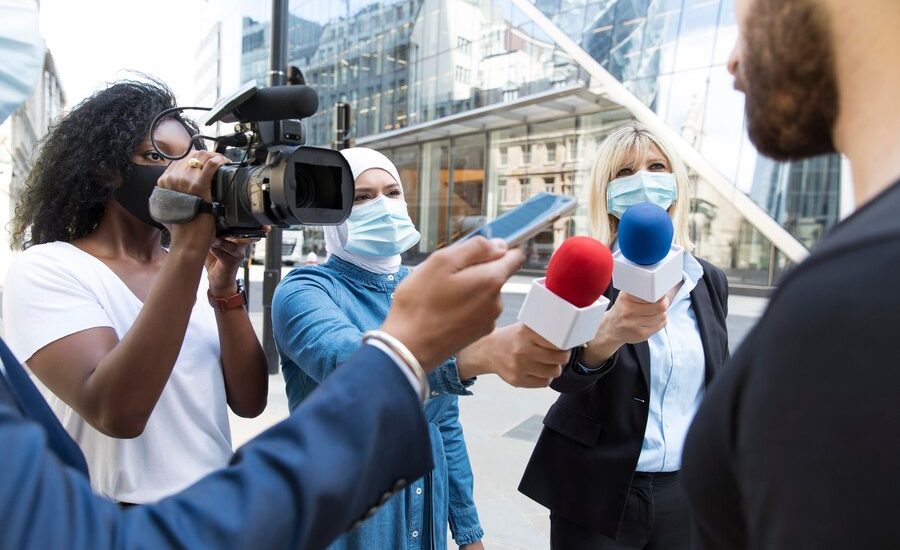Response and Protest Statements
Whenever news is published either in your favor or against you, it is possible to issue a response. Positive coverage usually receives little public acknowledgment, but negative or misleading news often warrants a formal reaction. Such responses are natural and can be expressed like:
- “Our response to the news titled ‘…’ published in [newspaper name] on [date].”
- “We strongly protest the news titled ‘…’ published on [date].”
Sometimes, a protest statement becomes necessary, especially when the matter is not covered at the PR level. If a media report harms your organization’s reputation, discredits a product, or raises public doubts, immediate action is required. This applies not only to the organization but also to specific products, owners, or key individuals.
A timely protest statement should be:
- Sent to the concerned newspaper or media outlet.
- Shared across other channels, including your official website, blog, and social media.
When to Send a Protest Statement
Protest letters should be considered under the following circumstances:
- When a news outlet publishes false or objectionable content deliberately or inadvertently.
- When the report attacks a person or organization unfairly.
- When a product or brand is maligned, potentially eroding consumer trust.
- When coverage is biased or one-sided, omitting the perspective of relevant parties.
- When unrelated negative associations are made with your company or its news.
Elements of a Protest Statement
A protest statement typically includes:
- Specific Reason: Clearly identify the portion of the news being contested.
- Supporting Evidence: Include facts, data, and references proving the inaccuracy.
- Publication Request: Politely request that the protest be published; mention if legal action may follow.
- Correct Information: Present the accurate account to counter the false narrative.
- Author Details: Name, designation, contact information, and date.
Key Guidelines
- Ensure your position is firm and fact-based. Weak evidence may backfire.
- Whether your protest is published depends on the newspaper’s discretion. Submit polite, well-supported letters to maximize the likelihood of publication.
- Many outlets print only part of your protest alongside the reporter’s statement; this ensures a balanced view for readers.
- If the original newspaper refuses, consider publishing in other newspapers, or share widely via website, blog, social media, or video messages.
- Live sessions or Q&A with audiences can also help clarify and counter false narratives.
Letters to the Editor
Letter writing remains a simple, effective way to raise issues. A letter may not require an immediate news event; it can highlight:
- Local problems (traffic hazards, infrastructure issues, public safety concerns).
- Civic issues (lack of services, educational topics, environmental awareness).
- Consumer grievances (e-commerce service gaps, product issues).
Example Template:
To the Editor,
[Newspaper Name]Subject: Request for publication of concern
Dear Sir/Madam,
I would be grateful if you could publish the following in your esteemed letters column:[Write the issue clearly, explain affected parties, and propose solutions.]
Sincerely,
[Name, Address, Designation]
Sample Letter:
Merul Badda, a busy area in Dhaka, lacks an overpass, putting thousands at risk daily. Residents, students, and office workers face hazards crossing the streets, especially near the bus stand and election offices. As a concerned citizen, I urge authorities to construct an overpass immediately to prevent accidents.
Submitted by: Mia Zumbur Ali Talukdar, on behalf of the local community
Letter Guidelines:
- Include a cover letter.
- Submit via email, post, or directly.
- Clearly describe the problem and affected area.
- Suggest practical solutions.
- Mention authorities involved if known.
- Estimate the impact on people.
- Provide author identification.
Reader Responses
Media outlets may also allow:
- Analytical opinions on domestic or international events.
- Comments on previously published news reports.
Reader responses may appear under a single headline, sometimes compiling multiple viewpoints.
Video Responses
Electronic media has increased the importance of video content. A short 15–30 second video bite or a brief voice-over can accompany a press release. Even if the full PR is not submitted, media may use portions as context. Including photos or visuals with audio ensures easier broadcasting by TV or online news channels.
By following these guidelines, organizations and individuals can effectively protect their reputation, correct misinformation, and communicate truth to the public while maintaining professional decorum. It’s best if you hire a PR or content agency for this.






